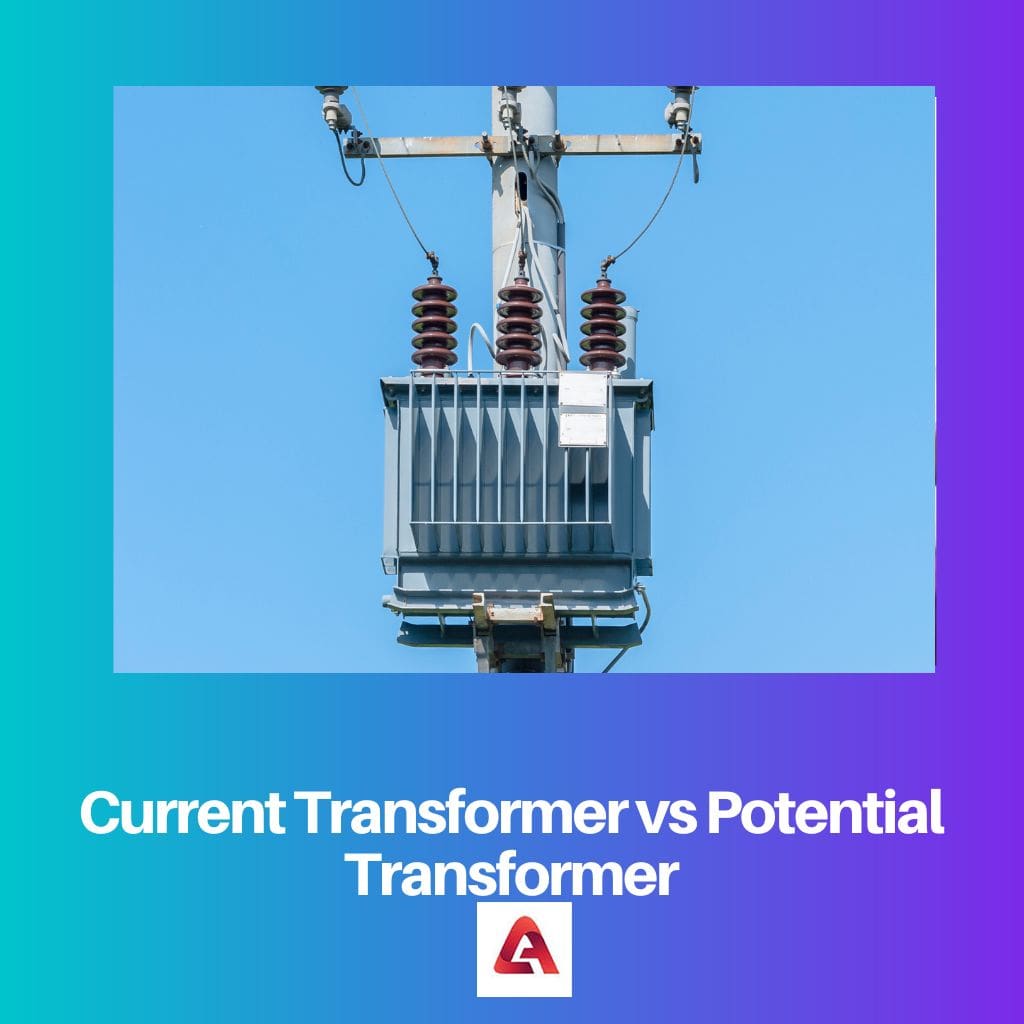Key Takeaways
- Current transformers measure and transform high currents into lower, more manageable values, while potential transformers step down high voltages to lower, standardized levels for metering and protection.
- Current transformers are designed to work in series with the circuit, whereas potential transformers work in parallel with the circuit.
- Accuracy and linearity are more critical in potential transformers than current transformers, as potential transformers are used for metering purposes and must provide accurate voltage readings.

What is Current Transformer?
Current transformers, also alternatively known as “CTs,” are those transformers responsible for altering voltage by multiplying or reducing currents. They are used to measure currents in alternative circuits. A CT is used as a backup or secondary current-producing mechanism that matches the primary current-producing machine by measuring it. In other words, current transformers are devices responsible for secondary currents that match the primary current by measuring it.
Current transformers, however, are of three types:
- Window
- Bar
- Wound
A current transformer that has winding wrapped around a core is called a “window,” while one having a bar that is solid through the window and is permanently a “bar” is called a “bar.” Alternatively, a current transformer having separate primary and secondary units is called a wound. In current transformers, the number of turns needed to measure the current is small. However, the transformer ratio in a current transformer is high. The current transformer is dependent on its own output and doesn’t rely on any secondary output.

What is Potential Transformer?
Potential transformers, also known as voltage transformers, are types of devices connected in parallel to alternative devices. Potential transformers act as a mediator that is responsible for balancing the voltage ratio as measured. They provide a minimal load for the supply. The function of potential transformers is to measure and protect the power system. Alternatively, they are used to reduce the higher voltage to a lower level. Potential transformers are also alternatively known as “step-down transformers” due to their job or responsibility of toning down the voltage.
Potential transformers are of two types:
- Metering voltage transformers
- Protection voltage transformer
Some functions of potential transformers are that:
- Potential transformers are responsible for reducing the voltage flow from a higher voltage to a lower voltage.
- Potential transformers are also used to convert a higher voltage current into a standard voltage.
- To safeguard electricians from high voltages.

Difference Between Current Transformer and Potential Transformer
- Current transformers, also alternatively known as “CTs,” are those transformers responsible for altering voltage by multiplying or reducing currents, while potential transformers, also known as voltage transformers, are types of devices responsible for reducing the voltage flow from a higher voltage to a lower voltage.
- Current transformers are divided into three types: Window, Bar, and Wound, while potential transformers are divided into two types: Metering voltage transformer and Potential voltage transformer.
- The transformation ratio of a current transformer is high compared to that of a potential transformer which is low.
- The number of windings in a current transformer is lower than that of a potential transformer with a comparatively higher number of windings.
- Current transformers are independent units and don’t depend on any secondary units, while potential transformers fully operate they need a backup of the primary unit.
Comparison Between Current Transformer and Potential Transformer
| Parameter of Comparison | Current Transformer | Potential Transformer |
|---|---|---|
| Definition | Current transformers are those transformers responsible for altering voltage by multiplying or reducing currents. | Potential transformers are types of devices responsible for reducing the voltage flow from a higher voltage to a lower voltage. |
| Types | Current transformers are of three types namely Window, Bar and Wound. | Potential transformers are of two types: Metering voltage transformers and Protection voltage transformer. |
| Transformation ratio | Current transformers has high transformation ratio. | Potential transformers has low transformation ratio. |
| Dependency | Current transformers are not dependent on secondary units. | Potential transformers are dependent on secondary units. |
| Input value | Current transformers require a constant flow of currents. | Potential transformers require a constant flow of voltage. |
| Material | Current transformers are designed with silicon steel. | Potential transformers are designed with top notch steel. |
| Winding | The number of windings is low in current transformers. | The number of windings is high in potential transformers. |
| Function | Current transformers are given with the responsibility of maintaining current flow. | Potential transformers are given with the responsibility of maintaining voltage flow. |
| Alternative names | Alternatively known as CT. | Alternatively known as voltage transformer. |